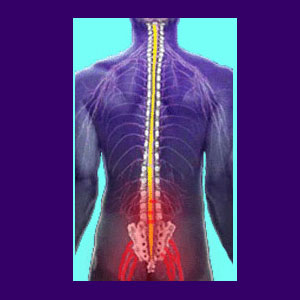
Lower back and leg pain is a layman’s term for what is generally known as sciatica. This symptomatic expression can exist unilaterally (on one side only) or bilaterally (on both sides). It must be noted that not all patients with leg pain have lower back pain, as well. Some symptomatic expressions are confined exclusively to the lower appendages, even when the source process does indeed reside in the lumbar spinal region.
As is typical in the back pain industry, the majority of back and leg pain issues are theorized to exist from structural conditions in the lower spinal regions, and in some cases, these speculations are correct. However, in many cases, there is no anatomical basis for the pain or a scapegoat condition takes the blame, but is not the actual underlying source of symptoms. This is why sciatica has such a terrible reputation as a long lasting and treatment-resistant dorsalgia syndrome.
This essay delves into explaining the dreaded duo of leg pain in association with lower back pain.
Lower Back and Leg Pain Expressions
There is no absolute when it comes to sciatica symptoms, since every patient has their own unique complaint. In fact, many patients have symptoms which change or move regularly, while only a minority of patients have regular expressions which remain constant. Some patients have more back pain than leg pain. Others have worse pain in their leg, or legs, and only a bit of tightness or discomfort in the back itself. Some patients have terrible back pain, but no actual pain in their legs. Instead, tingling, numbness or weakness may be some of the possible sciatica symptoms in the lower limbs.
Patients may enjoy relief, or increased pain, from any particular position or activity. There is rarely a logical structural explanation for any of these scenarios and many are likely to be psychologically-programmed responses.
Variable lower back and leg pain patterns have a lower likelihood of being caused by a single structural issue, such as a herniated disc. Predictable patterned pains may be caused by spinal issues, but may also be due to a variety of other possible explanations.
Lower Back and Leg Diagnosis and Treatment
Some of the most common questions that we receive are queries asking about the best treatment for back and leg pain. Our response is virtually universal: It is not the symptoms which dictate treatment, but the causation. In order to find the ideal treatment (if any at all is actually needed), an accurate diagnosis must be achieved. We advise all patients to make this goal their number one priority.
Remember that many structural issues will take blame for pain, but may not actually cause it. This misdiagnosis is a shockingly common occurrence in the back pain treatment sector and explains why so many therapy options offer such incredibly poor curative results.
Every diagnosis will entail a specific and often highly individualized expected symptomatic expression. Therefore, it is wise to look for inconsistencies at the diagnostic stage. If the expected symptoms do not correlate to the actual expression, you are probably on the wrong path, right from the start.
Lower Back and Leg Pain Misery
This set of painful symptoms is the bane of untold millions of back pain sufferers worldwide, myself included. The usual accompanying restrictions include back pain when sitting, driving and sometimes, when standing for long periods of time. Activity makes pain better in about half the number of affected patients and worse in the other half. This is true even when the diagnosis is identical (certainly a hint that something is amiss in the medical management of these types of pain syndromes).
The most prevalent condition blamed for lower back pain, with accompanying leg pain, tingling, numbness or weakness, is a lumbar or lumbosacral herniated disc. This disc is usually theorized to be compressing one or more of the cauda equina nerve roots, thereby causing pain and neurological symptoms. While it is a common scenario and can certainly occur, there is often a distinct lack of proof of any neurological impairment and the symptoms often do not even correlate to the nerve structures said to be involved.
In our experience, these diagnostic theories are often misguided, as treatment statistics clearly are horrid in their efficacy. Remember, research your diagnosis carefully and always be on guard for things which poke holes in the logic of said diagnostic theory.





